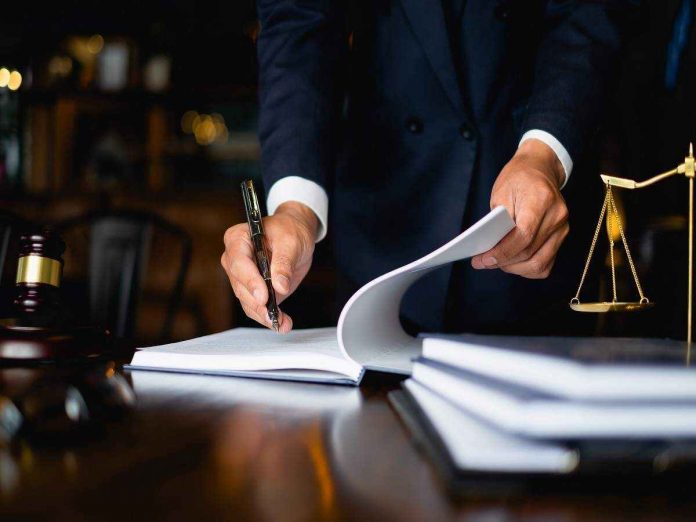This article is written by Abhilekh Tiwari, pursuing a Certificate Course in National Company Law Tribunal (NCLT) Litigation from LawSikho.
Table of Contents
Introduction
The inception of the Insolvency and Bankruptcy Code, 2016 (Code) had brought along with it various ambiguities, most of which are gradually being resolved through the judicial pronouncements from time to time. However, in the case of the Limitation Act, 1963 (Limitation Act) and the code, ambiguity remains in the case of applicability of certain provisions. Law of limitation requires any action to be taken within a stipulated period of time and imposes a bar on spurious litigation which consumes the time of courts and affects the genuine cases. The code was enacted to revive the companies and return the debts of creditors in a timely manner. The interplay between the Limitation Act and the Code has been attempted to be clarified by the Supreme Court of India in various instances.
Provisions involved in the interplay between IBC and Limitation Act
Section 238A was inserted by the IBC (second Amendment) Act, 2018 which stated that the provisions of the Limitation Act will be applicable to the proceedings under NCLT, NCLAT, DRT, and DRAT.
Article 137 of the Limitation Act states that if the period of limitation has not been specified for any application then the period of limitation shall be 3 years from the date when the right to initiate a cause of action accrues. In the context of the code, the period of limitation will begin from the date when the right to sue for recovery of debt will accrue to three years.
Section 18 of the Limitation Act provides that if there is written acknowledgement of the liability before the expiration of the limitation period then the new limitation period will be started from the date of the acknowledgement. If any debt has been acknowledged by the debtor in three years from the date of accrual of debt then the limitation period for recovery of the debt will be restarted from the date of acknowledgement.
Section 29(2) of the Limitation Act states that for any suit, appeals, an application under any law prescribes a different limitation period than Section 3 of the Limitation Act will be applicable. Further, Sections 4 to 24 will apply unless that enactment expressly excludes itself from the provisions.
Inconsistencies in previous judgments
Considering the case of B.K. Educational Services v. Parag Gupta
The Hon’ble Supreme Court, in the case of B.K. Educational Services v. Parag Gupta (2018) addressed the question of applicability of the Limitation Act in the cases before the NCLT. The prime question, in this case, was whether Section 238A of the Code will be applicable to the cases before June 6, 2018. The case also addressed questions pertaining to the extent of applicability of the Limitation Act in context of recovery suit and initiation of the insolvency resolution process.
Hon’ble Supreme Court referred to the report of the Insolvency Committee, 2018 in which it is stated that the intent of the legislature was never to enable the creditors with a fresh opportunity to initiate action which is barred by the limitation. A limitation is of procedural nature and will be applied retrospectively. Further, the intention of the legislature was clear since the beginning, i.e. to include Sections initiating the insolvency resolution process and not just the recovery suit. Article 137 of the Limitation Act will be applicable from the date when default occurred.
-
Further affirmation in the case of Babulal Vardharji Gurjar v. Veer Gurjar Aluminium Pvt. Ltd. (2020)
This case was affirmed in the case of Babulal Vardharji Gurjar v. Veer Gurjar Aluminium Pvt. Ltd. (2020) wherein the corporate debtor was declared as an NPA and action was initiated under Section 7 of the Code. It was held by the Hon’ble Supreme Court that three years of the limitation period as stated under Article 137 of the Limitation Act will be applicable from the date of default for an application under Section 7 of the Code. It would be extendable under Section 5 only if an application under Section 5 of the Limitation Act for the condonation of delay is made. It was further stated that the limitation period can be extended under Section 18 of the Limitation Act but it extends only to the recovery actions and not to the initiation of the corporate insolvency resolution process.
-
Jagdish Prasad Sarada vs Allahabad Bank (2020)
However, in the case of Jagdish Prasad Sarada vs Allahabad Bank (2020), the Hon’ble NCLAT stated that delay can only be condoned if an application under Section 5 of the limitation act is made and not through Section 18. This is not in consonance with the previous judgments of Babulal Vardharji Gurjar v. Veer Gurjar Aluminium Pvt. Ltd. and is creating ambiguity.
-
Yogesh Kumar Jashwantlal Thakkar v. Indian Overseas Bank (2020)
Further, in the case of Yogesh Kumar Jashwantlal Thakkar v. Indian Overseas Bank (2020), the Hon’ble NCLAT extended the limitation for filing of an application under Section 7 of the Code citing Section 18 of the Limitation Act. On the contrary, the case, Bishal Jaiswal v. Asset Reconstruction Company (2020), interpreted the Babulal case in a manner stating the Section 18 cannot be made applicable to the proceedings under the code.
Having a look at the established position
On March 26, 2021, the judgment of Laxmi Pat Surana v. Union Bank of India & Anr. (2020) settled various ambiguities pertaining to the applicability of the Limitation Act. The major ambiguity was pertaining to the applicability of Section 18 of the Limitation Act in applications for initiation of the corporate insolvency resolution process. This judgment settled the position that Section 18 of the Limitation Act will be applicable to the initiation of the insolvency resolution process under Section 7 of the Code. Also, this judgment clarified that since the liability of the guarantor is co-extensive with that of the debtor and hence the liability of the guarantor will also be extended due to the applicability of Section 18 of the Limitation Act.
In this case, the brief facts are that Union Bank of India extended loans to Mahaveer Construction which is a proprietary firm. The guarantor was Sumrana Metals Ltd. Union Bank of India had filed a Section 7 application on February 13, 2019, however, the default date was January 30, 2010.
Referring to Article 137 of the schedule of Limitation Act, according to which the debt was time-barred and the intent of the legislature was never to revive the time-barred debts. Now the interplay of Section 18 of the Limitation Act comes. The Hon’ble Supreme Court clarified that fresh accrual of the limitation period under Section 18 is being derived from the Limitation Act itself and it will not render the debt time-barred. This would be applicable even in the initial application for the corporate insolvency resolution process under Section 7. Further, the court stated that there exists no reason to exclude the applicability of Section 18 of the Limitation Act under the Code. Furthermore, the court laid that if there is an acknowledgement of the debt by the debtor within the limitation period and has an intention to establish a legal relationship like that of the corporate debtor and the financial creditor then such acknowledgement will certainly extend the limitation period.
Section 19 of the Limitation Act states that if payment is made on the account of interest or debt before the expiration of the limitation period then the fresh limitation period starts from the date when such payment was made. It can also be inferred from the case that the other provisions of the limitation act will also be applicable in matters relating to insolvency and limitation period such as Section 19 of the limitation act. In the case Babulal Rukmanand v. Official Liquidator, Bharatpur Oil Mills Pvt. Ltd. (1967), Supreme Court relied upon Shapoor Freedom Maza v. Durga Prasad (1961) held that the entry on the balance sheet is sufficient to fulfill the requirement under Section 19 of the Limitation Act then it would amount to acknowledgement and will give the fresh start for the limitation period.
Conclusion
The judgment of Laxmi Pat Surana v. Union Bank of India & Anr. (2020) has brought the required clarity on the conflict and ambiguities between the Limitation Act and IBC. Section 238A of the Code was interpreted by the Supreme Court stating that the section was inserted not with the intent to render the Limitation Act inapplicable. In the 3rd law commission report, reasons for the implementation of the Limitation Act were stated. The concept of limitation was discussed in M/s. Speculum Plast Pvt. Ltd. v. PTC Techno Pvt. Ltd. (2017), in which it was stated that a right not exercised for a long time becomes non-existence. The sole purpose of the Limitation Act is to maintain the public interest by putting a stop to dilatory tactics used by the parties. The pertinent point to note is that by acknowledging the debt, the party does not intend to be oblivious about their right, rather secure the right at a later point of time if required.
Students of LawSikho courses regularly produce writing assignments and work on practical exercises as a part of their coursework and develop themselves in real-life practical skills.
LawSikho has created a telegram group for exchanging legal knowledge, referrals, and various opportunities. You can click on this link and join:
 Serato DJ Crack 2025Serato DJ PRO Crack
Serato DJ Crack 2025Serato DJ PRO Crack










 Allow notifications
Allow notifications



